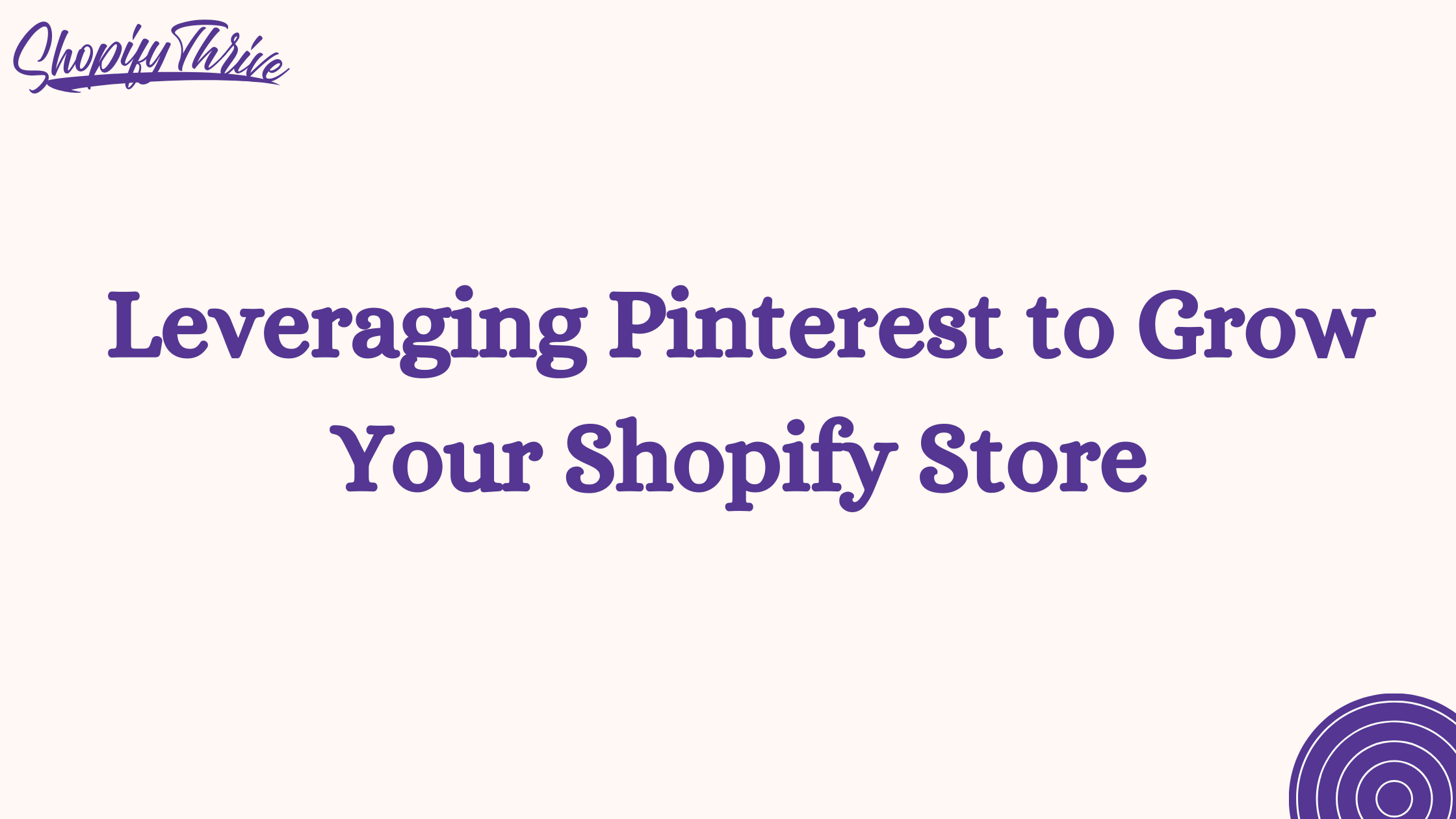
Noor
Leveraging Pinterest to Grow Your Shopify Store
- July 23, 2023
- , 4:45 pm
- , Shopify Tips
Introduction
Pinterest is a powerful social media platform that can be a game-changer for your Shopify store’s growth. With its visually-driven format and highly engaged user base, Pinterest offers a unique opportunity to showcase your products, drive traffic to your online store, and boost sales. In this comprehensive guide, we will explore step-by-step how you can leverage Pinterest to maximize your Shopify store’s reach and success.
1. Understanding Pinterest’s Potential
Before diving into the strategies, let’s first grasp the immense potential Pinterest holds for e-commerce businesses like Shopify stores. Pinterest boasts over 400 million monthly active users, making it a vast marketplace to tap into. Additionally, it’s a platform where users actively seek inspiration, discover new products, and plan their future purchases, making it ideal for product promotion.
2. Setting Up Your Pinterest Business Account
The first crucial step is to create a Pinterest Business Account or convert your existing personal account to a business one. This allows you to access valuable features like Pinterest Analytics and the ability to run Pinterest Ads. Ensure that your business profile is complete with a clear profile picture, an engaging bio, and a link to your Shopify store.
3. Creating Compelling Pinterest Boards
Pinterest revolves around boards where users categorize and organize their pins. As a Shopify store owner, you should curate boards that align with your niche and products. Follow these best practices:
- MECE Framework: Create boards that are Mutually Exclusive and Collectively Exhaustive (MECE) in their topics, ensuring they cover a wide range of relevant themes related to your products.
- High-Quality Imagery: Use eye-catching and high-resolution images that showcase your products in the best light. Vertical images with a 2:3 aspect ratio tend to perform well on Pinterest.
- Keyword-Rich Descriptions: Craft keyword-rich descriptions for your boards and include relevant hashtags to increase their discoverability.
- Diverse Content: Go beyond product images; incorporate lifestyle shots, infographics, and videos to add variety to your boards.
4. Crafting Irresistible Pins
Pins are the heart of marketing. To create captivating pins that attract users and drive them to your Shopify store, follow these tips:
- Compelling Titles: Craft clear, descriptive, and keyword-rich titles for your pins.
- Keyword Optimization: Integrate relevant keywords in the pin descriptions, but avoid keyword stuffing.
- Call-to-Action (CTA): Include strong and actionable CTAs, such as “Shop Now,” “Learn More,” or “Get 20% Off.”
- Branding: Consistently incorporate your brand elements, such as logos or brand colors, to enhance brand recognition.
- Rich Pins: Utilize Rich Pins for enhanced product information, making your pins more informative and appealing.
5. Implementing a Content Schedule
Consistency is key. Develop a content schedule to maintain a steady stream of fresh pins. Use tools like Tailwind or Hootsuite to automate and schedule your pins for optimal posting times.
6. Leveraging Pinterest SEO
Pinterest functions as a search engine and understanding its SEO principles is crucial. Here’s how to improve your Pinterest SEO:
- Keyword Research: Conduct thorough keyword research using tools like Pinterest’s own search bar, Google Keyword Planner, or third-party tools like Ubersuggest.
- Board Titles and Descriptions: Optimize your board titles and descriptions with relevant keywords to enhance their visibility.
- Pin Descriptions and Hashtags: Use targeted keywords in pin descriptions and incorporate 2-5 relevant hashtags.
- Pinterest Trends: Stay updated on Pinterest Trends to identify rising keywords and capitalize on emerging trends.
7. Engaging with the Pinterest Community
Pinterest is a social platform, and engaging with the community is crucial for success:
- Repin and Follow: Actively repin and follow users in your niche to expand your network and encourage reciprocation.
- Community Boards: Join community boards and contribute valuable content to increase your reach.
8. Pinterest Analytics: Tracking and Optimization
Monitor your Analytics regularly to gain insights into your pin performance, audience demographics, and top-performing boards. Use this data to refine your strategies and optimize your content.
Pinterest Analytics Metrics to Focus on:
- Impressions: Track the number of times your pins appear in users’ feeds.
- Click-Through Rate (CTR): Measure the percentage of users who click on your pins after seeing them.
- Top Pins: Identify your most successful pins and analyze their characteristics for future reference.
Conclusion
By employing a well-structured approach to utilizing your Shopify store, you can significantly enhance your brand’s visibility, drive traffic to your store, and ultimately boost your sales. Embrace the power of Pinterest’s visual storytelling to connect with potential customers and build a strong online presence for your business. Implement the strategies outlined in this guide and watch your Shopify store flourish on the platform.
If you enjoyed this blog post, make sure to check out some of our other useful Shopify tips here: Shopify Tips Archives | Shopify Thrive
Ready to transform and grow your shopify brand?
See why companies like Lash Artisan, Lust For Lashes, joemetry.co and more
launched their shopify Brand With ShopifyThrive.
